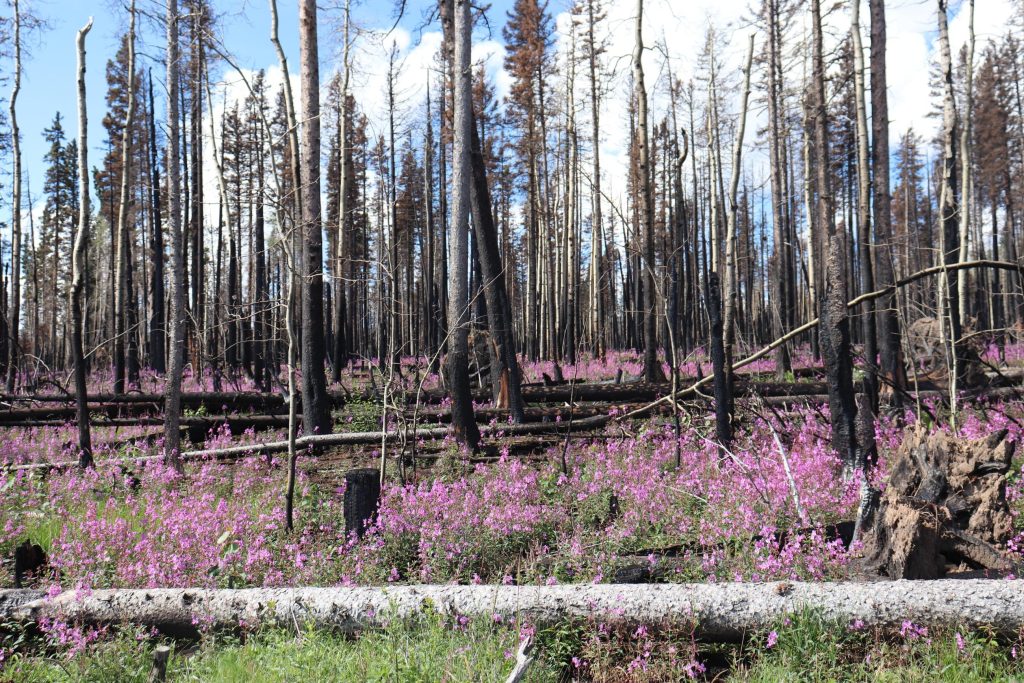From a numbers perspective, it’s hard to see a downside to the massive amounts of oil revenue flooding the state of New Mexico’s coffers.
But there is one: The windfall is enlarging the state’s dependence on the energy industry.
That may not be a problem right now. But it will be when the price of oil crashes again. And almost everyone — industry experts, politicians, economists — expect that it will.
After all, New Mexico experienced that debilitating thud only four years ago.
Gov. Michelle Lujan Grisham and state lawmakers are striving to reduce that dependency through a number of budget proposals aimed at diversifying the economy, some of which will be debated during the 30-day legislative session kicking off this week. But it’s a complex, long-term task that has confounded and often eluded other commodity-dependent states. And even the most optimistic experts say the state’s efforts to wean itself from oil’s boom and bust lockstep may take the length of several governors’ terms, not just Lujan Grisham’s.
The governor, who has made diversifying the economy a focus of her agenda since taking office just over a year ago, is undaunted. Rather than focusing on one specific sector, her administration’s approach has been to target nine different industries.
“I get challenged to pick one thing — we’ll be the tech state, the startup state, the innovation state,” Lujan Grisham said in a recent interview. “We are all of those things, but we’re also small and one of those things by itself is not going to transform our economy and completely diversify it.”
Lujan Grisham has included this multipronged approach in her budget recommendations for the upcoming legislative session. For instance, she wants to increase her Tourism Department’s budget by $7 million, providing another boost to the state’s national marketing campaign.
She aims to beef up staffing for state agencies in outdoor recreation and film, as well as allow eight new full-time employees for Spaceport America, which the state hopes will attract more aerospace activity as it ramps up to its expected first commercial spaceflight this summer. The governor also is calling for $10 million for a rural infrastructure project fund.
Her plan would build upon legislation passed last year that funded increases for tourism, paid off a backlog in the film industry and invested in local economic development projects.
And there is already growing investment in areas such as construction and outdoor recreation, as well as in renewable energy sectors such as wind and solar, said Jon Clark, deputy secretary of the state’s Economic Development Department. The agency said in 2019 it helped create more than 1,700 jobs, increased private investment by $740 million and awarded job-training grants for 2,100 new workers.
The state’s private-sector job growth was eighth in the nation in the first 11 months of last year, at 1.9 percent, while manufacturing and construction job growth both greatly outpaced national figures for that period at 3.8 percent and 8.3 percent, respectively, according to Clark’s agency.
“We’re seeing a lot of successes across the board,” Clark said.
Even so, New Mexico has become more dependent on oil and gas in recent years, not less.
An estimated 45 percent of general fund revenues are now tied to the oil and gas industry, up from around 35 percent in 2016. Nearly 70 percent of the revenue growth the state experienced between fiscal years 2018 and 2019 was related to energy, according to the Legislative Finance Committee.
And while New Mexico’s 2.6 percent economic growth in the third quarter of last year was the seventh-strongest in the country, according to the U.S. Bureau of Economic Analysis, and the unemployment rate has fallen steadily, a significant portion of those gains are because of the energy-related growth in the state’s southeastern corner.
For instance, in the first quarter of last year, nearly half of the 11,000 jobs the state added were in oil-rich Lea and Eddy counties, according to the University of New Mexico.
The growing dependence isn’t necessarily because of a lack of effort by state officials. It’s because of the significant gains posted by the energy industry.
Indeed, the more oil production and revenue grows, the greater portion of state revenue it accounts for, and output almost tripled between 2012 and 2018, while monthly output topped 30 million barrels for the first time last October.
Lujan Grisham’s emphasis on diversification, one other governors have sought as well, is based on a simple truth. If the state could draw more tax revenue from other sectors, it wouldn’t see such rapid declines when the price of oil crashes as it did in early 2016, when crude fell to $27 per barrel from over $100 per barrel less than two years earlier.
To be clear, diversifying sources of state revenue isn’t the same as diversifying economic development, said Jeffrey Mitchell, director of UNM’s Bureau of Business and Economic Research. The latter has other objectives, such as creating jobs, and its impact on state revenue can be indirect or marginal, he said.
But the two are related: Helping to grow other sectors of the economy can help the state draw more tax revenue from other sectors.
“At some point we’ll have a bust in oil and gas and for a lot of reasons, especially state revenue, we need to have an economy that doesn’t depend so much on one industry,” said Jim Peach, an economics professor emeritus at New Mexico State University.
Asked about the increasing dependence of state revenue on oil, Lujan Grisham responded that New Mexicans can’t ask for “instant gratification” on the issue. She says she’s only just beginning her efforts and that lessening a state’s reliance on oil is a long process that will outlast her time in office.
“When you don’t get it all done in one year, people get frustrated — don’t get frustrated!” the governor said. “I do expect that in 10 years people feel completely different about our reliance on one economic sector.”
But judging by the experiences of other states in a similar position, reaching those goals could take a long time.
Other oil-rich states
Take North Dakota. The state began efforts to diversify its agriculture-based economy back in the 1990s. It pursued production of value-added products such as pasta and ethanol, and passed property tax and sales tax exemptions to encourage industry.
Yet despite those efforts, when the massive fracking boom in the state’s Bakken formation came in the first half of last decade, oil took a commanding position among the state’s revenue contributors.
Since then, the state has taken on a multitude of initiatives to try to lessen that dependence, from pursuing the petrochemical industry to boosting university research in technology, state Sen. Rich Wardner said. But it still hasn’t been easy.
“It’s so slow and so gradual that I would say a lot of these value-added products were growing and then the oil came and engulfed it,” said Wardner, a Republican who is the state’s Senate majority leader. “It overpowered it.”
Still, he says that if it wasn’t for the state’s years of diversification efforts, it would have faced an even larger budget deficit when energy prices suddenly fell in 2016.
“It would have been a larger gap — no question about it,” Wardner said.
That oil crash was devastating for many U.S. states that depend on oil and gas severance taxes for revenue. Alaska faced a $3.8 billion budget deficit in 2016, Louisiana’s shortfall was $2 billion and Oklahoma’s grew to $1.3 billion. North Dakota had to slash its budget and tap its rainy day fund as the state’s severance taxes fell dramatically.
In New Mexico, the combined deficits for 2016 and 2017 amounted to more than $600 million. Legislators called a special session in October 2016 in a bid to rebalance the books with spending cuts and transferring money from unspent balances.
“You couldn’t find a happy face anywhere in Santa Fe in 2016 and 2017,” Peach said. “The situation is a lot different now, but there are a lot of people who understand that this could go away again.”
Yet understanding the problem in oil-dependent states hasn’t solved it, said Adam Kamins, senior regional economist at Moody’s Analytics. Texas is an exception, but it had a larger, more diverse economy to begin with. It’s the smaller oil states like New Mexico that have the greatest challenge.
“You hear intentions to really diversify away from a dependence on energy, but I don’t think any of them have meaningfully shifted away from oil,” Kamins said.
Tax code and education
So, what to do in New Mexico?
Economists say a goal of diversifying state revenue can have more success if an entire menu of options is employed, not just the chef’s specials of attracting new industries and job growth.
For instance, another, quicker method would be to reform the tax code to eliminate the many deductions and exemptions the state grants, Mitchell said.
“If what you really want to do is diversify the state revenue base, you’re going to have far more impact by changing those things than you are in terms of creating jobs in other sectors,” he said.
But while state House Speaker Brian Egolf said in October he was considering such a proposal for the upcoming session, members of the Legislature’s interim tax committee later said it was unlikely this year, and there’s no tax reform bill on the legislative agenda released by Lujan Grisham last week. Legislators would likely need to spend more time studying what is a very complex — and probably politically risky — proposition.
In any case, growing other sectors of the economy is a more durable solution because changes to the tax code can be undone down the road, Kamins said.
“Fundamentally changing the economy is more durable, but on the flip side, it’s a lot harder to do,” he said.
Also, Mitchell believes the best long-term strategy of all is one that is already atop the Lujan Grisham priority list — improving education. It’s a goal other governors have emphasized, but have long struggled to achieve.
“You have to create a workforce that is attractive to business, that has the ability to adapt skills to opportunities,” he said. “That is the single most important economic development strategy you can put forward.”
Education would receive nearly half of the proposed new recurring spending under the governor’s budget plan. Among her initiatives is a one-time, $320 million appropriation to create a permanent fund for early childhood education, and to put $35 million toward the governor’s proposed Opportunity Scholarship, which would help eliminate tuition and fees for New Mexicans attending public community colleges and universities.
But it would take a long time — it takes far longer than a decade for today’s kindergartner to receive a college degree or certificate — to see the impact of such efforts on the economy and state revenue. That will require future governors and Legislatures to buy into the plan as well.
“We’re talking about a 10- to 20-year project,” Mitchell said.
Clark of the Economic Development Department said that even if some of the recent job gains were because of oil and gas, New Mexico was still in the top 10 states in the U.S. in job creation over the past six months and had its best year of job growth last year since 2005. It’s progress that comes after the state’s 10-year employment growth between 2009 and 2019 was tied for the fifth-worst in the nation at 2.55 percent.
The state is seeing higher wages, too. Jobs related to Local Economic Development Act projects had wages 19 percent higher in 2019 than the average during the eight years under former Gov. Susana Martinez, Clark said.
Still, it’s clear that there’s a lot more work to do. Work that may take decades.
“It’s key to recognize there’s no silver bullet that will solve everything tomorrow,” Clark said. “We certainly need to start taking action today.”






















